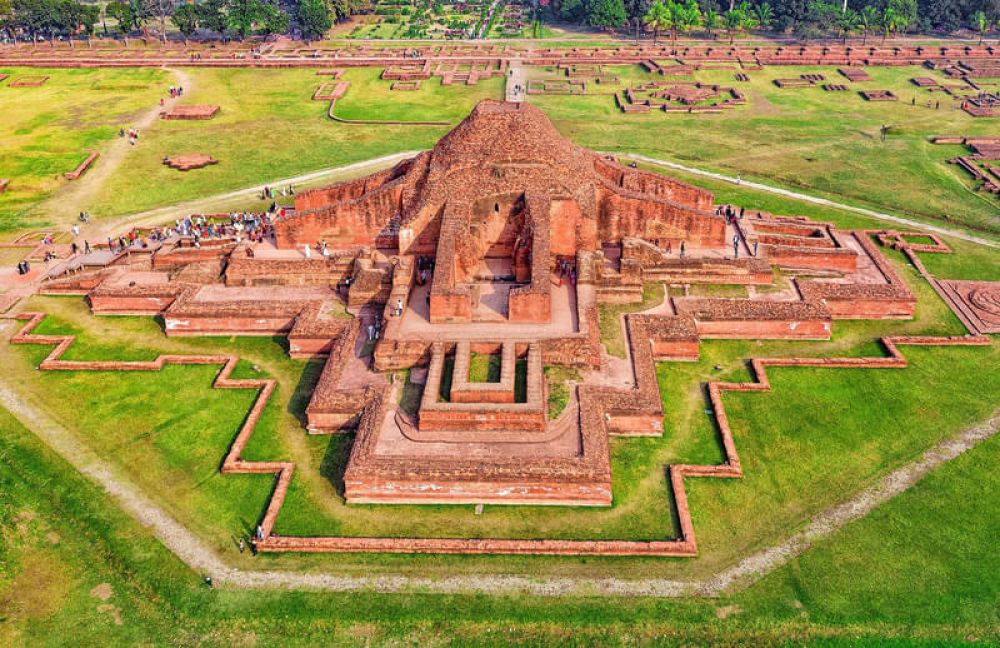Paharpur is a small village located in the north-western region of Bangladesh, renowned for its historical significance and heritage. It is most famous for the ancient Buddhist monastery called Somapura Mahavihara, which is one of the most important archaeological sites in the country. Established in the 8th century during the Pala dynasty, the monastery stands as a proud reminder of the region's illustrious past. This UNESCO World Heritage site is considered the largest and best-preserved monastery south of the Himalayas. It features a cruciform structure with a colossal central stupa surrounded by a multitude of cells for monks, intricate terracotta plaques, and a variety of other sanctuaries. The design of Paharpur's monastery influenced Buddhist architecture in Cambodia, Java, and beyond. Paharpur also provides insight into the spiritual and secular lives of the inhabitants of ancient Bengal. The monastery's extensive grounds and the adjacent museum, which displays many of the artifacts found during excavations, make it a rich educational resource for scholars and a fascinating attraction for tourists from around the world.

